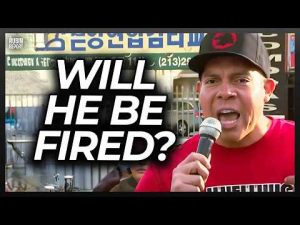**Rethinking Education: A Call for Clarity in America’s Classrooms**
In the heart of America’s capital, a troubling trend has been brewing within the hallowed halls of higher education. Colleges and universities, once regarded as bastions of learning and critical thought, appear to have shifted towards a more precarious mission – one that blends education with radical ideology. This transformation raises eyebrows and ignites concern among many, especially when one considers the influence these institutions wield over the next generation.
At the center of this debate is Stacy Patton, a professor at Howard University in Washington DC, who has ignited controversy with her recent comments. As a physician of the educational arts—do not forget the PhD—it would be expected that her mission would involve enlightening students on the virtues of reason and tolerance. Instead, she seems to advocate emulating historical figures who took up arms and indulged in violence. Specifically, she looks to John Brown, a 19th-century abolitionist, who is famous not just for his anti-slavery efforts but also for the bloodshed he caused. While he may be a complex historical figure, glorifying his violent methods as a model for allyship raises more than just an eyebrow. It screams for an examination of current educational practices — are they fostering critical thinking or radical fanaticism?
Patton’s comments recommended that today’s white allies embody the spirit of Brown by sacrificing their comforts for the marginalized. Her statements, with their heavy overtones of incitement, paint a disturbing picture of how some educators might view the path to social justice. It’s almost as if she’s suggesting that a return to violence is not only justified but necessary for progress. Historically, John Brown did not just raise awareness or speak to injustices; he engaged in acts of violence that claimed lives. How does it serve education when such a figure is celebrated as a role model for allies?
This situation opens the door to a wider discussion about the ideological barriers present in many American universities. Many are experiencing a pattern of radicalization rather than intellectual development. The worry is that, with professors like Patton at the helm, students may be influenced to adopt extremist viewpoints instead of engaging in healthy discourse. Indeed, following the breadcrumbs from these ideologies often leads students directly into the arms of militant groups that have proven to use violence as a means of advocating their causes. One such example is the infamous Antifa, which has continuously expressed its support for violence against opposing ideologies under the guise of social justice.
It’s no secret that across several campuses, the name “John Brown” isn’t merely a historical reference; it has become a rallying banner for groups that celebrate violence against perceived fascists. Through this lens, it’s time for parents and students alike to reassess the environment they are stepping into when pursuing higher education. The alarming messages coming from certain professors should prompt a reassessment of whether these institutions are worthwhile investments. Are they teaching our future leaders to think critically, or are they enabling a culture of division and hostility?
In a world where ideas should clash and grow, viewing violence as a legitimate tool for effecting change sends a dangerous message. This situation poses an urgent need for all of us to be vigilant about the teachings and ideologies that are entwined in our education system. It is essential to encourage curiosity and debate while standing firmly against the normalization of violence as a means to an end. As parents and guardians consider the future of their children’s education, it becomes vital to question not just the curriculum but also the values and attitudes propagated within these institutions. We owe it to our children to foster an environment where respect, reason, and understanding reign over chaos and violence. Therefore, the future of higher education may depend on a collective awakening to the troubling realities occurring behind university gates.







